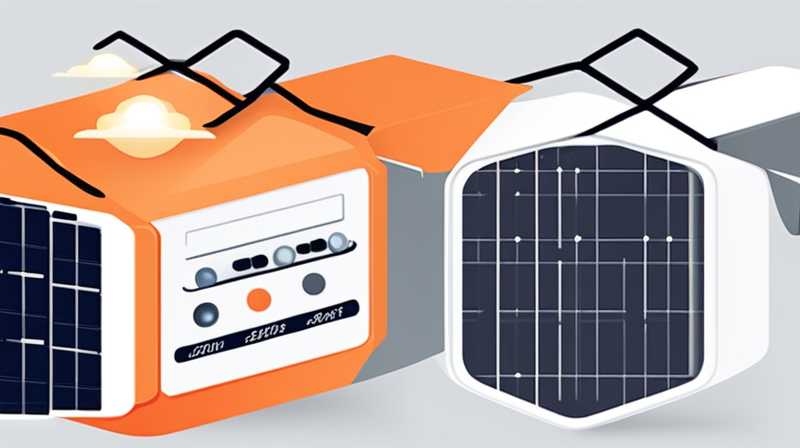
1. Solar lanterns may run out of power due to several reasons: understanding these can assist with optimal usage and maintenance. Key reasons include: a. Insufficient sunlight exposure, b. Battery age and capacity reduction, c. Excessive energy consumption, d. Faulty components. Insufficient sunlight exposure occurs when the solar panels cannot receive adequate sunlight, impacting battery charging. A thorough understanding of a solar lantern’s operation can help in maintaining its efficacy and longevity.
2. Understanding Battery Mechanics
The battery in a solar lantern stores energy harnessed from sunlight. Solar panels convert sunlight into electricity, which charges the battery throughout the day. Over time, the efficiency of the battery decreases. Battery age, type, and overall condition are critical factors that influence durability. Lithium-ion batteries, for instance, potentially last longer than lead-acid batteries but can still exhibit diminished capacity after several years.
Methods to prolong battery life comprise routine maintenance and ensuring that the lantern is adequately charged during sunny days. Regularly cleaning the solar panels is vital, as dirt and debris can significantly impede energy absorption. If one notices a stark decline in the lantern’s performance, it may indicate that the battery needs replacement.
3. Solar Panel Efficiency
The efficiency of the solar panel plays a pivotal role in energy generation. Various factors can diminish this efficiency, including shading, dirt accumulation, and even the angle of the solar panel installation. For maximum sunlight exposure, the panels should be oriented toward the sun, which may vary with seasons. Inconsistent or inadequate sunlight can directly affect the energy production capacity of the solar lantern. Therefore, ensuring optimal placement in open areas is paramount in maintaining functionality.
Additionally, various environmental factors can impair solar panel performance. Inclement weather conditions such as prolonged cloudy days can limit the ability of the panels to capture sunlight effectively. In regions where sunlight is sporadic, the battery may not fully charge, leading to temporary power shortages.
4. Excessive Energy Consumption
Another key contributor to power depletion involves the demand for energy beyond the lantern’s capacity. Solar lanterns typically are designed with a specific brightness level and operational time based on the energy they can store during charging. If the lantern is used at higher brightness settings or for extended hours without adequate time for charging during daylight, it may quickly deplete its battery.
Some lanterns offer multiple lighting modes to conserve energy. Users should be encouraged to utilize dimmer settings when possible to prolong usage life. Understanding the energy consumption of connected devices, if applicable, is crucial. For example, some models may have features like USB ports to charge devices, which can draw substantial power, leading to quicker battery exhaustion.
5. Age and Wear of Components
The mechanical and electronic components of the solar lantern also undergo wear and tear over time. Connections may weaken, and circuitry can become faulty, impacting the overall functionality of the solar lantern. If a lantern continuously fails to charge despite appropriate conditions and practices, it could indicate more serious underlying issues with either its batteries or wiring.
Regularly inspecting the lantern’s components can help identify potential problems before they escalate. If any signs of damage or corrosion exist, it’s prudent to service or replace the impacted parts to restore functionality.
6. Frequently Asked Questions
WHAT CAUSES A SOLAR LANTERN TO STOP WORKING?
Multiple factors contribute to the cessation of a solar lantern’s operation. Insufficient sunlight exposure, battery aging, and faulty components are primary culprits. If solar panels are regularly placed in shaded areas, they may not harness adequate sunlight for charging. Battery degradation due to time and usage also affects power retention. Furthermore, a breakdown in internal components can hinder overall performance. Regular checks are necessary to ensure optimal operation and longevity.
HOW CAN I PROLONG THE BATTERY LIFE OF MY SOLAR LANTERN?
To enhance the lifespan of a solar lantern’s battery, users should ensure consistent exposure to sunlight by positioning the lantern in optimal locations devoid of shading. Additional regular maintenance, such as cleaning solar panels, helps improve energy absorption. Also, observing energy consumption levels is vital; utilizing dimmer settings or turning off the lantern when not in use conserves energy and extends battery life. When the battery ages, periodic assessments can help determine if it requires replacement or servicing.
CAN I USE MY SOLAR LANTERN DURING WINTER?
Using solar lanterns in winter conditions is indeed permissible. However, performance may be affected due to shorter daylight hours and potential cloud cover. Ensuring solar panels are free from snow and ice will maximize sunlight absorption. Users should also account for the colder temperatures that may affect battery performance. Keeping the lantern in a sunny outdoor spot during the day maximizes charging effectiveness, ensuring reliability even in winter months.
7. Final Thoughts on Solar Lantern Power Depletion
In summary, understanding the mechanisms behind solar lanterns and the reasons they may run out of power is crucial for effective usage. Adequate sunlight exposure, proper maintenance, and awareness of environmental impacts significantly influence performance. Users can take proactive steps to ensure longevity and functionality by adopting best practices, such as appropriate placement, regular cleaning, and observance of battery health. Emphasizing conservation efforts, such as using energy-saving settings, can further extend the usability and enjoyment of solar lanterns in various conditions. With the right knowledge and attention, solar lanterns can serve as reliable sources of light, benefiting not only individual users but also promoting sustainable energy practices that align with environmental stewardship.
Original article by NenPower, If reposted, please credit the source: https://nenpower.com/blog/why-is-the-solar-lantern-out-of-power/


